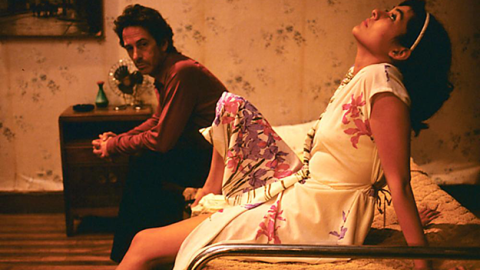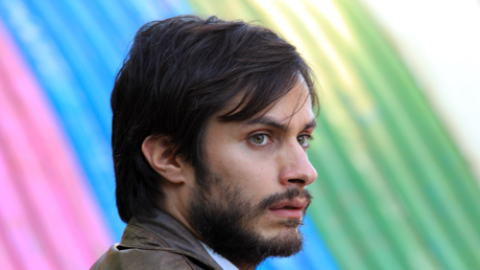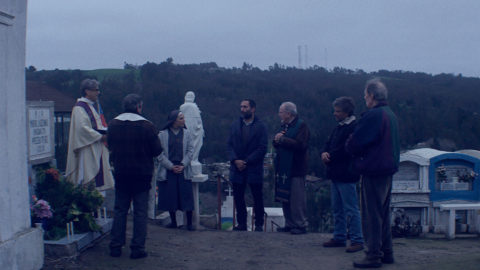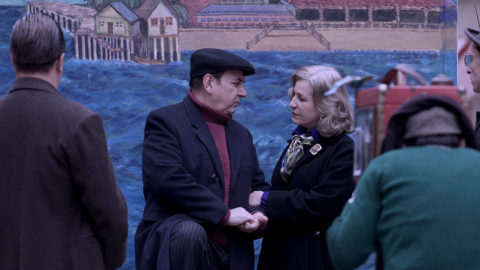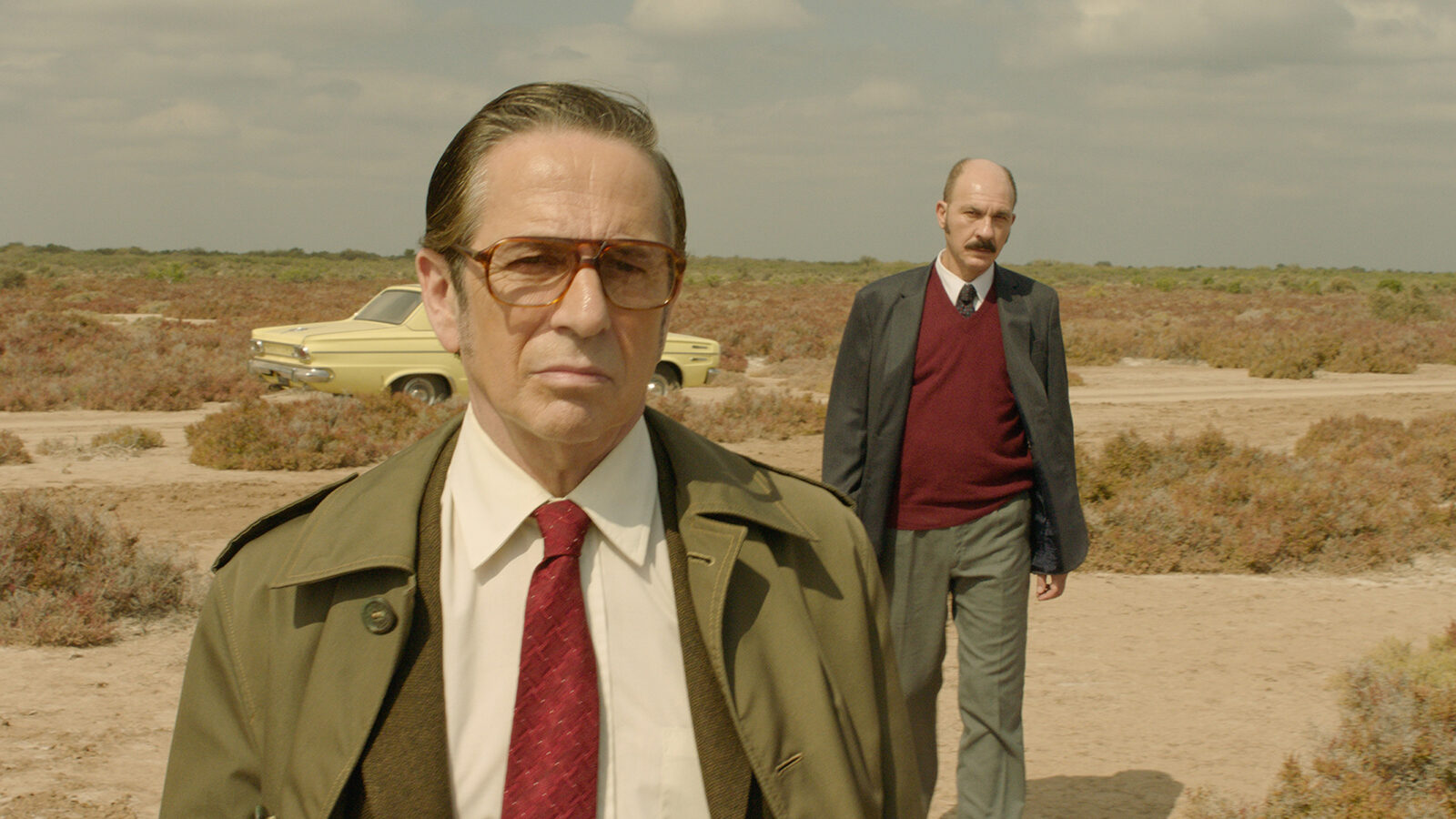
Art and Craft: All Is Permitted
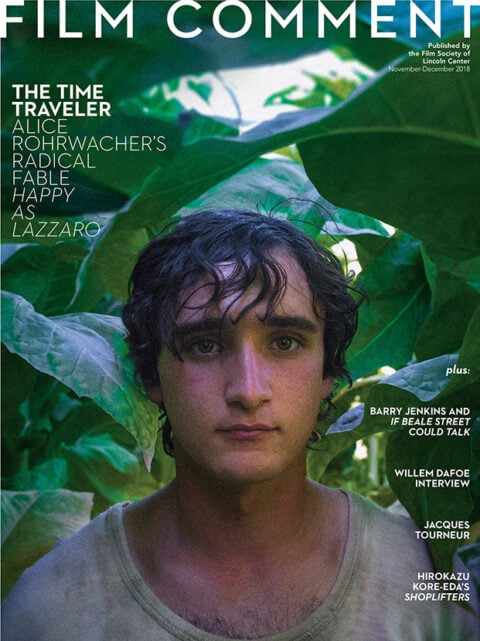
The following is an extended version of what appears in the November/December issue.
Writer-director Benjamín Naishtat’s third feature unfolds in an unspecified Argentine province. The year is 1975. Following a mysterious, protracted, almost surveillance-like fixed shot of a house in the process of being vacated, we are transported to a busy restaurant where Claudio (Darío Grandinetti), a middle-aged lawyer waiting for his wife to join him for dinner, is accosted by a younger, highly agitated man (Diego Cremonesi) we will later come to know as “El Hipi.” El Hipi loudly lays into Claudio for occupying a table that could be more of more immediate use to someone ready to order, namely El Hipi. Claudio acquiesces, allowing the younger man to take his table, but shortly thereafter launches into a rhetorical counterattack, having identified in his opponent an unstable temperament that can be undermined through a public shaming in the guise of a psychological diagnosis.
A perversely entertaining air of the absurd permeates this scene of heated debate over dining-patron etiquette; of course, the absurd has historically been a means of delivering politically charged material. As the incident continues and becomes increasingly complicated and violent, Claudio’s self-serving response to an existential dilemma renders him the sort of a morally fraught protagonist who would not be out of place in Camus. The film’s implicit condemnation of bourgeois collusion with Argentina’s civic-military dictatorship, meanwhile, feels closely aligned to certain key works by Roberto Bolaño. Noirish and blackly humorous, Rojo brilliantly tracks the decisions of a more or less ordinary man that lead to an extraordinary situation as a way of observing an entire culture’s descent into perdition.
In keeping with Vincent van Warmerdam’s score for isolated piano taps and anxiogenic strings, virtually every scene in Rojo is riddled with portent: the guest who offers advice on how to rid one’s house of bothersome insects; a television commercial in which a man shoots another man for attempting to appropriate his bonbons; a room full of draped taxidermy; a diplomatic gesture by some American cowboys that cannot help but stand in for U.S. intervention in Latin American politics. The film’s most enigmatic and emblematic scene features an eclipse, the overlapping of celestial bodies echoing the fateful inciting encounter between Claudio and the furious Hipi and bathing the world in deep crimson. Another visually arresting scene features a yellow sedan, red tail lights, a rosy-hued desert floor, and tangerine dawn intermingling to oneiric effect: from the title on down, color is key to Rojo, as are clothes and accoutrements. One of its strategies for externalizing the corruption eating away at the core of its characters comes via Claudio’s vanity, his cigarette holder and ascots, his too obviously dyed sides and moustache contrasting a barren pate that, in the film’s quietly sinister denouement, becomes shrouded by a ridiculous glossy black wig.
Rojo’s chilling political commentary is juxtaposed by its affectionate adoption of suitably retro stylistic flourishes, genre tropes familiar from films and television of the 1970s and ’80s. Naishtat’s deployment of freeze-frames, zooms, dissolves, and slow motion to impart a sense of his cagey protagonist’s troubled inner life recalls The Conformist and The Conversation, the film’s distinctive title-card sequence is lifted from The Dead Zone, and the figure who emerges halfway through Rojo as Claudio’s antagonist, a Chilean television detective named Sinclair, was created partly in homage to Columbo. Sinclair is played by the great Chilean actor Alfredo Castro, whose sheer presence in a film such as this signals a journey into the shadow side of Latin America’s late-20th-century upheavals.
Rojo had its world premiere in the Platform competition at the Toronto International Film Festival, which is where I met with Castro to discuss the film and his work generally. Now in his sixties, Castro was already a respected veteran in Chilean theater, film, and television when he found international recognition in a string of films for director Pablo Larraín, beginning with Tony Manero in 2008 and continuing with Post Mortem (2008), No (2012), The Club (2015), and Neruda (2016). He also received accolades for his starring role in Venezuelan director Lorenzo Vigas’s From Afar (2015).
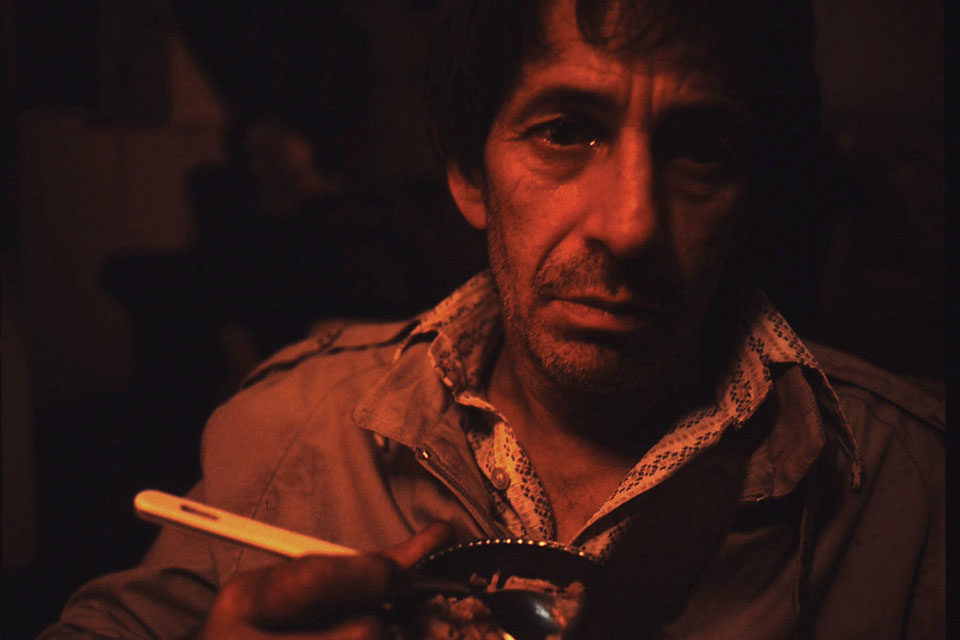
Tony Manero
Your characters in Tony Manero, No, and Rojo all seem to be variations on ruthless men who possess fierce convictions yet are undone by some larger apparatus or institutional force.
As actors we each have a sort of specialization. Just as a doctor might dedicate him- or herself to the brain, the stomach, the bones, we actors have a particular use when it comes to inhabiting certain roles. It’s incredible, because I’ve done lots of comedy. I spent 25 years making soap operas for Chilean television and nearly all my characters were funny. This is not the case with films. I’ve played terrible people in all the films you just mentioned. And I remain interested in their ethical contradictions. [Rojo’s] Detective Sinclair, for example, prays, believes in God and genuinely feels profound faith. Nonetheless he is in collaboration with the dictatorship. He allows a crime to pass [unpunished] and feeds this burgeoning culture of impunity. Sinclair is essentially saying, “Here is a dead man. It doesn’t matter. There are plenty of dead men. Who cares about one more?”
It’s the combination of opportunity and tacit permission granted by a shift in moral ambiance, allowing these characters to commit crimes that they wouldn’t otherwise perform. It reminds me of certain key works of Latin American literature, such as Roberto Bolaño’s Distant Star, in which political circumstances gives birth to a dormant psychopathology. But I’m talking about something that you lived through.
And you’re absolutely correct. The dictatorships in Latin America installed this consent. You are allowed to murder who you want, when you want, and make it disappear. Why shouldn’t an outcast, a psychopath, be able to kill an old lady to purchase some glass to dance on [as in Tony Manero]? Why shouldn’t a man ostensibly on the side of justice let a murderer go free? This was the message of the culture at the time. This is why we now adopt the term dictaduras cívico-militares. We experienced a military-civilian dictatorship, not a military dictatorship. It requires reckoning with, so I’m encouraged by these young filmmakers—Pablo Larraín, Benjamín Naishtat, and Alonso Ruizpalacios [director of Museo]—who are revisiting the histories of our countries, Chile, Argentina, and Mexico, with such energy, freedom, and creativity. You never see a single armed policeman actively working on behalf of the dictatorship in Tony Manero or Rojo. In these films, the malignancy is in the background, in the air.
Have you had moments while working with these guys where you contributed to details in the films based on your personal experience of the era?
A little bit, but in each case these directors made thorough research. And in almost every case these directors aren’t seeking direct involvement in the politics of the period; they’re telling, with great subtlety, smaller, quotidian stories that become political. Two men get into a debate in a restaurant about who should be allowed to sit at a table: it’s a silly matter on the face of it; yet as its aftermath unfolds, it transforms into a tale tethered to politics, a tale of disappeared people. These projects excite me because so many young people in our countries, from all classes and levels of education, aren’t interested in this history. These filmmakers are going against the current.
Where did you reside for the duration of the Pinochet years?
In Santiago, the whole time. And I feel very moved to be discussing this with you right now, on this very day, the 45th anniversary of the coup d’état that brought Pinochet into power and opened the floodgates for so many atrocities. I opened my Facebook today and saw so many homages to [assassinated President] Salvador Allende while I’m here, in Toronto, presenting this film that tells its strange little story as a way of remembering those years.
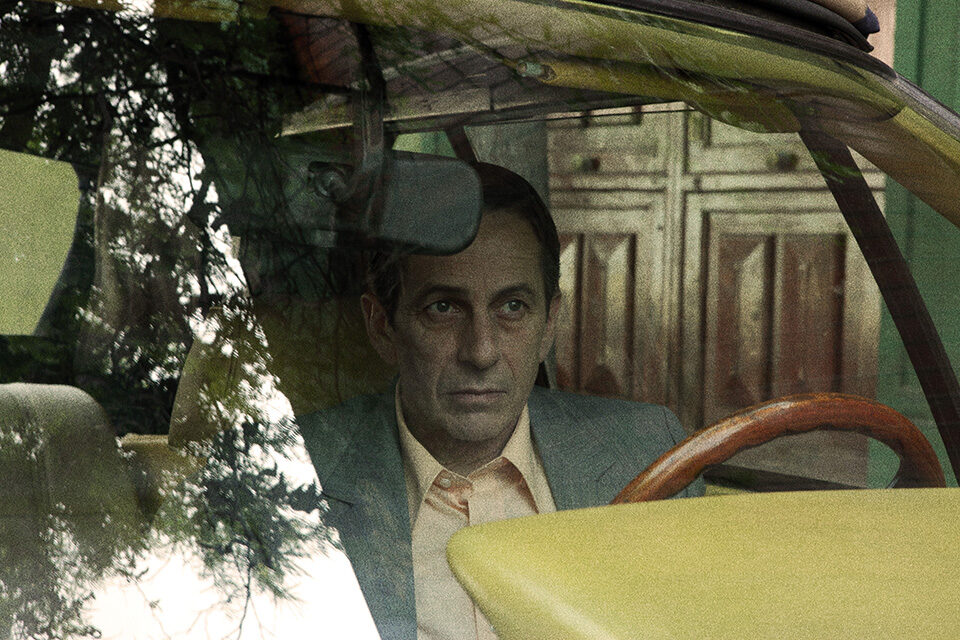
No
Is the way that those years are remembered different in Argentina than in Chile?
Quite different. Because in Argentina there have been efforts by people working on behalf of justice and human rights to call out the oppressors. In Chile, the oppressors remain free. This is a tremendous distinction.
Rojo takes place in Argentina, but Sinclair, your character, is from Santiago de Chile. We also have this adolescent character, a perpetrator of violence, whose name is Santiago and who, even more than Claudio, openly embodies this brazen sense of impunity we’ve been discussing. I can’t help but wonder if Benjamín is trying to imply something particular about Santiago, about Chile, in contrast to Argentina.
That’s an interesting question to which I don’t have the answer, but I can tell you this: we were in the midst of filming when we heard about the case of Santiago Maldonado, this young activist who had disappeared and whose body was found after having spent [at least] 55 days underwater. His nickname was “El Hipi” [the same name as the character in Rojo].This eerie coincidence shook all of us involved in the production, to be telling this story of a disappeared young man and then to hear of a new story, a true story, which provides us with evidence that the government is still disappearing people.
Was Sinclair always going to be from Chile, in the script?
Yes, because Benjamín had always wanted me to play the character. We talked about having me put on an accent, but Benjamín didn’t want that. He wanted a very plain Spanish with some details in the speech patterns that would render Sinclair a little more vulgar. I began to draw little things from my memories, because I felt that we knew this type of guy in Latin America, the sort who might aspire to be a celebrity detective. He’s more a simulation of a detective, really, this television detective, but still he uncovers crimes. He’s a phony, but he performs his research and his investigation and he savors any chance to attain glory.
Is he in some sense a typical Chilean?
Somewhat, but, honestly, he’s more Argentine. Argentines have this extra element, the Italian heritage, which comes with a degree of showmanship. And they psychoanalyze everything like crazy. The Chilean character is more flat. We don’t possess the exuberance of the Argentines. Chileans are more melancholic, more internal, more contained. For all these reasons, this character was difficult for me, this guy who infiltrates and interrogates and speaks so boldly.
A dear friend from Chile told me when we first met that I didn’t seem to her like a Chilean or a Canadian because I always looked her in the eyes.
Claro. That’s perfect.
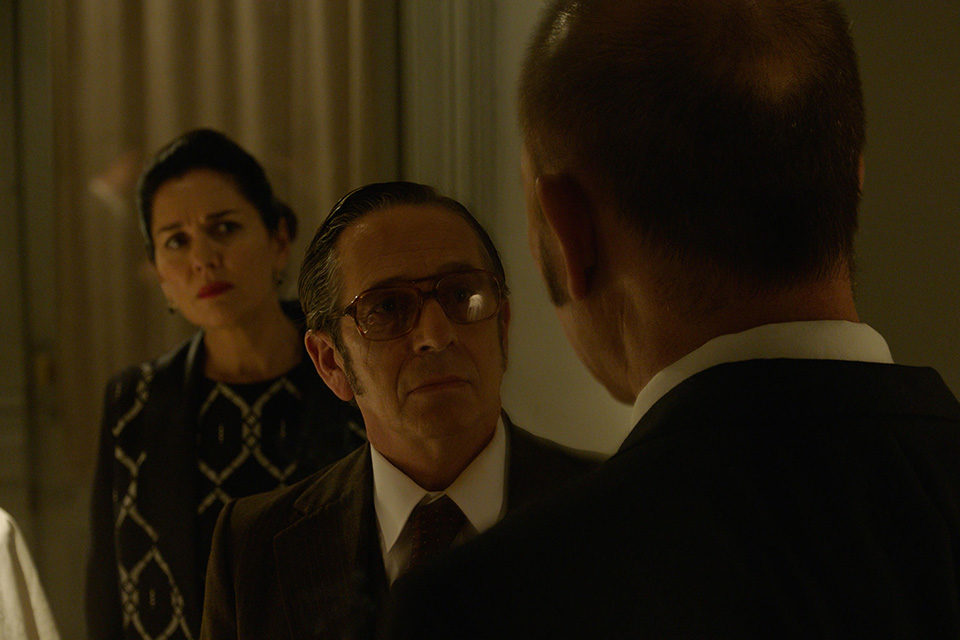
Rojo
In many of your performances, however, you often look your scene partner in the eyes. This is especially memorable in Rojo’s climatic desert scene [involving a dead body]. Is this a technical decision?
Not technical, no, but you’re totally correct. These eyes matter. In that desert scene I cried for real, because I was moved by [Claudio’s] contradictions, by his profound convictions and his profound fascism. In every film I look for those one or two scenes that form the nucleus of the narrative. That final scene in the desert was the scene that emotionally, intellectually, politically interested me most. I shaped the entire role so as to arrive at this scene. Because that’s the scene, or one of the scenes, that everything depends upon, that illuminate the dramatic arc.
How was your experience of shooting that scene?
Where we were filming that day was lousy with flies. Noisy flies. Darío Grandinetti and I were becoming desperate. Every time we shooed a fly away there were 10 new ones to take its place. I went home with flies in my pockets. Darío asked Benjamín, “What am I supposed to do? I can’t spend every moment brushing away flies?” Benjamín said, “Don’t worry. Leave them be. I’m going to use them.” It was an ingenious addition to the scene. We are, of course, talking about a dead body. Any dead body out there is going to be covered with flies. How perfect. I believe deeply in such things. I believe they are a gift. This scene excited me so much. I didn’t approach it technically. I worked from emotion. The emotion of God is present. My character believes in Him. He created the heavens, he created men and women, and he created impunity.
Has spending so much of your career exploring such deplorable activities made it harder for you to retain a sense of faith, in humanity or what have you?
No. This work is precisely what gives me the strength to endure. Because the dictatorship in Chile still exists in some way. We no longer have the military presence, but there remain 1,300 disappeared. This work we do gives one the spirit to keep fighting for them, to integrate their story into our destiny. When I see young artists keeping this spirit alive, going back and finding ways to renovate our history, I can hold onto my hope that there will be justice and revelation. I know we have a future.
Do you find yourself still asking the same questions you did when you started working?
Yes. I have a theater company in Santiago, Teatro de Memoria, and we are developing work all the time. In television I’ve done a lot of silly stuff, but in the theater, as with film, I work with political material. I’ve tried to maintain an ethical doctrine in my life. Because my work is my life. I don’t memorize my roles; I metabolize them. I am them. So I humbly suggest that I am on a journey propelled by curiosity, politics, and ethics.
José Teodoro is a freelance critic and playwright.



